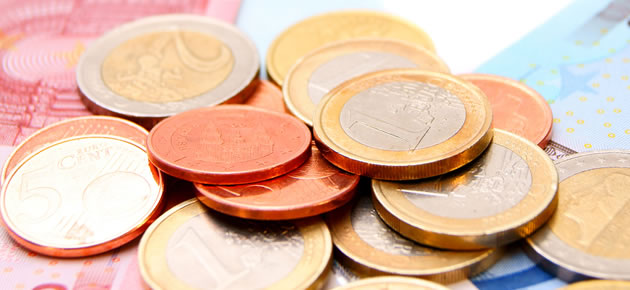Overnight the Australian Dollar hit fresh lows against several of its most traded currency counterparts as the poor Australian employment report sparked rate-cut fears.
As the surprising drop in Australian employment is just the latest in a string of signs that the Australian economy is struggling, the likelihood of the Reserve Bank of Australia intervening increased and the appeal of the South Pacific currency dropped.
During European trading on Thursday the Euro extended gains against the ‘Aussie’ as Eurozone and German final inflation figures matched up with previous estimates and the European Central Bank’s monthly report reaffirmed a commitment to supporting the Eurozone’s recovery by whatever means necessary.
A lack of pertinent economic news from Australia limited EUR/AUD movement overnight, but the pairing was still heading for a five-day gain on Friday despite a disappointing construction output report from the Eurozone.
For a third month the pace of construction output in the Eurozone declined.
The 0.6 per cent month-on-month drop recorded for November followed a dip of 1.2 per cent in October.
On the year construction output was down by 1.7 per cent in the penultimate month of 2013.
The Euro was largely unchanged following the data publication.
According to Eurostat, construction on commercial/residential buildings slowed, outweighing the increase in civil engineering construction.
Although output fell in Germany and Italy, Spain and France reported increased construction.
As we head into the weekend the Euro is likely to hold on to recent gains against the Australian Dollar, but we forecast that the EUR/AUD pairing will experience significant movement next week.
If the pace of growth in China slows in the fourth quarter as economists have forecast, and industrial production also shows a decline, Australia’s trade prospects will be dented and further pressure will be piled on the ‘Aussie’.
Meanwhile, ZEW measures of economic sentiment for Germany and the Eurozone are both expected to show improvement, a result which would boost the Euro.
Other data releases to be aware of next week include Australia’s Westpac consumer confidence report, Australian inflation figures and Eurozone/German manufacturing PMI.
Shortly after the Australian employment report was published earlier this week, economist Riki Polygenis noted; ‘We remain mindful of the downside risks to growth and employment in the second half of 2014 as mining investment declines more markedly, particularly with little evidence as yet of an impending pick up in non-mining investment to fill that void.’
With such risks facing the Australian economy the EUR/AUD pairing could remain bullish for the foreseeable future.
Euro (EUR) Exchange Rates
[table width=”100%” colwidth=”50|50|50|50|50″ colalign=”left|left|left|left|left”]
Currency, ,Currency,Rate ,
Euro, ,US Dollar,1.3600,
,US Dollar,1.3600,
Euro, ,British Pound,0.8273 ,
,British Pound,0.8273 ,
Euro, ,Australian Dollar,1.5467 ,
,Australian Dollar,1.5467 ,
Euro, ,New Zealand Dollar,1.6445 ,
,New Zealand Dollar,1.6445 ,
Euro, ,Canadian Dollar,1.4877 ,
,Canadian Dollar,1.4877 ,
[/table]



